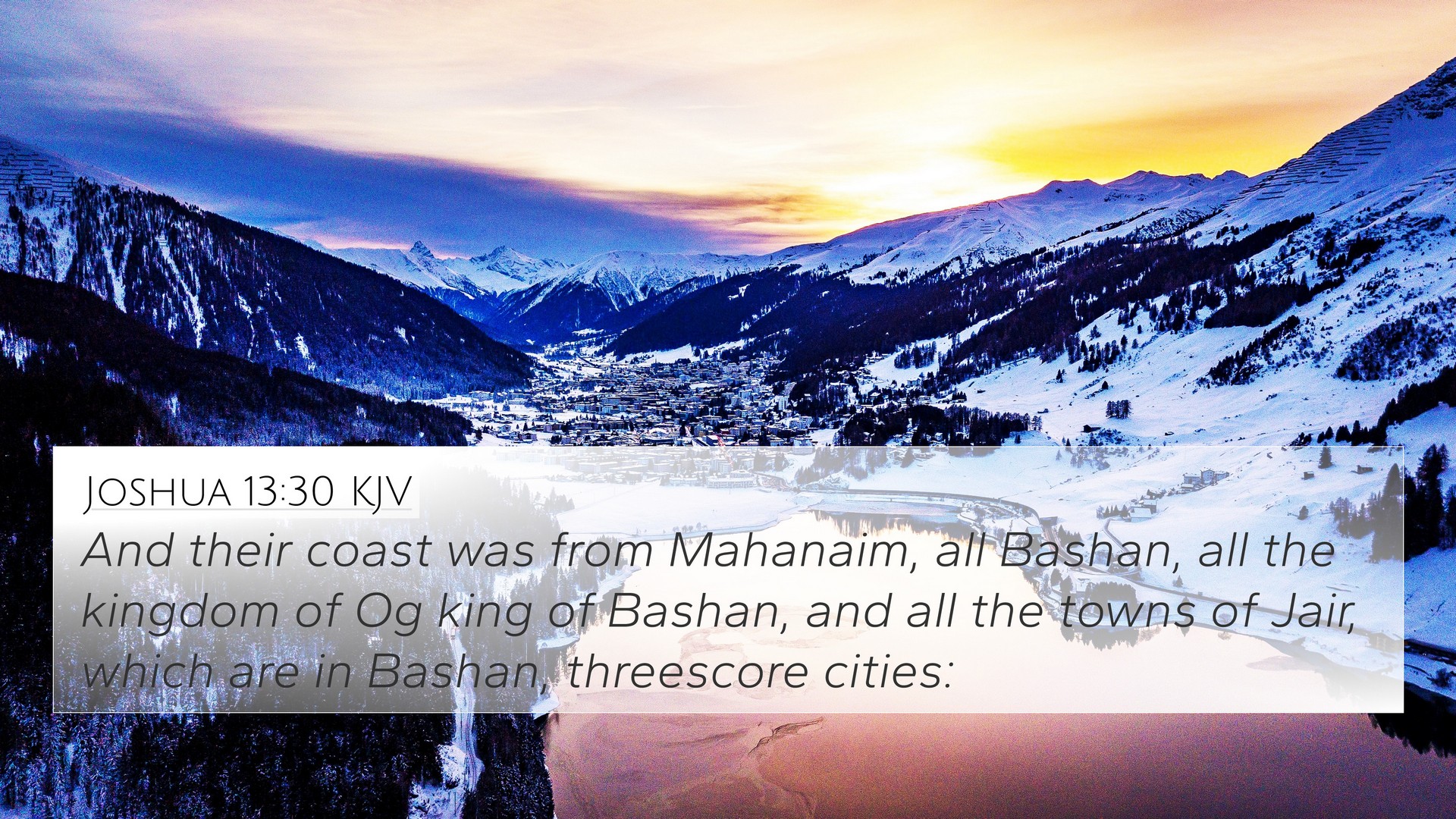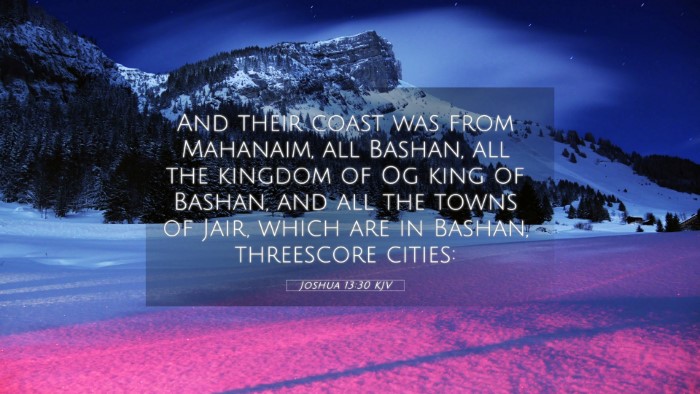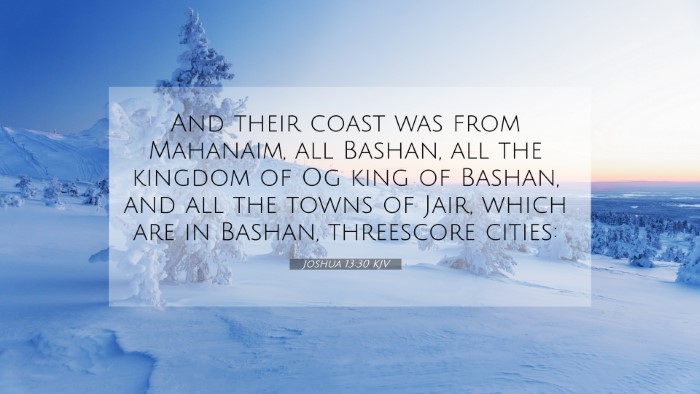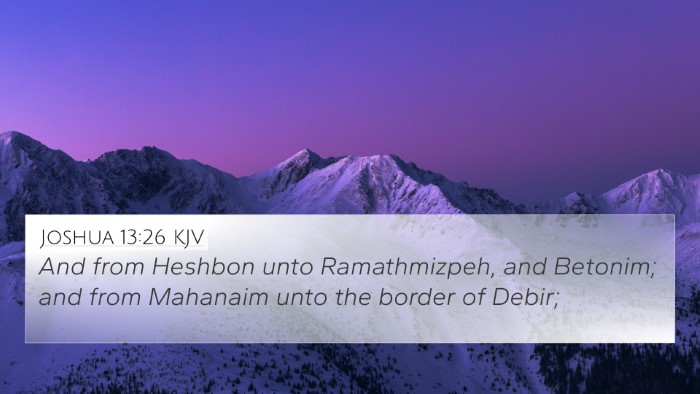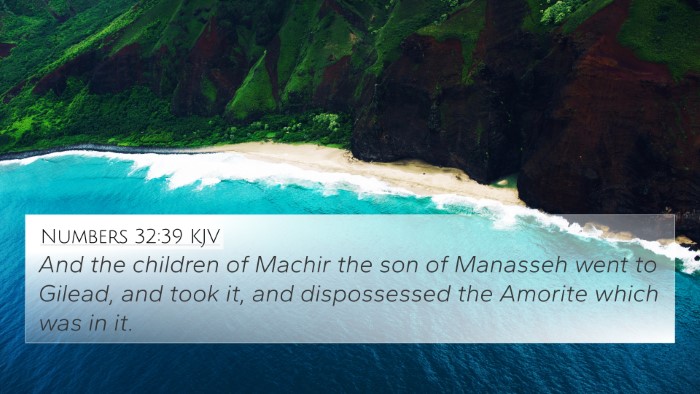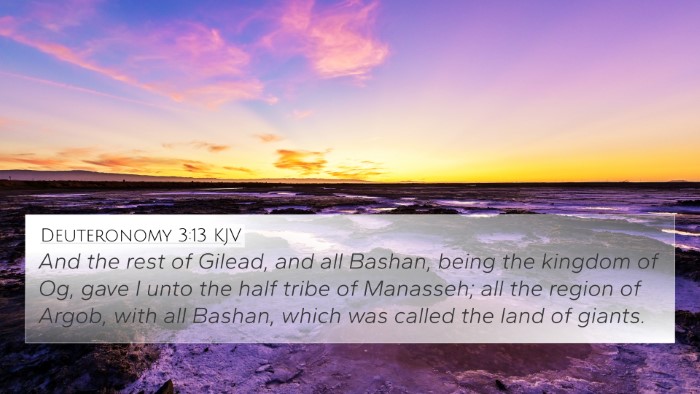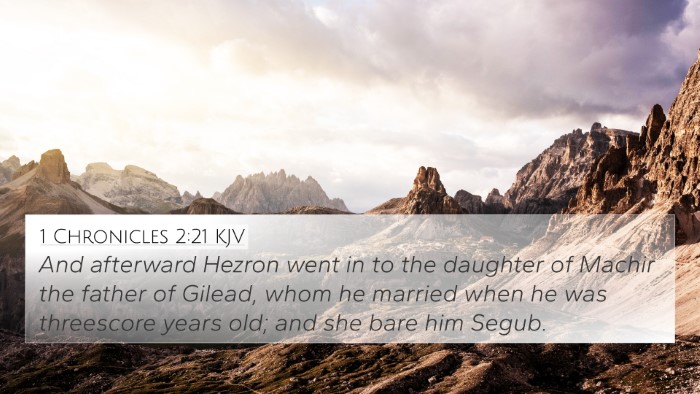Understanding Joshua 13:30
Joshua 13:30 states, "And half Gilead, and the city of the upper coast, which is in the region of the Geshurites and Maachathites, and all Mount Hermon, and all Bashan, which is called the land of giants."
This verse provides a geographical description of the territories allocated to the tribes of Israel after their conquest of Canaan. It specifically mentions the regions of Gilead and Bashan, which hold significant historical and prophetic implications in biblical narratives.
Contextual Analysis
According to Matthew Henry, the specifics of territory allocation highlight God's providence and fulfillment of promises to His people. There is a particular emphasis on "the land of giants," suggesting that Israel faced formidable challenges in maintaining their hold in these regions.
Albert Barnes adds that Bashan was a region known for its fertility, often associated with strength and abundance, implying that God's blessings extend even into the territories occupied by giants, a metaphor for both physical challenges and spiritual adversities the Israelites encountered.
Adam Clarke emphasizes the historical importance of this region in Israel's narrative, noting its mention in relation to Og, the king of Bashan, which serves as a reminder of God's power in subduing Israel's enemies.
Key Themes in Joshua 13:30
- God's Promises: The verse affirms the faithfulness of God in giving the land to Israel.
- Divine Conquest: It highlights the continuing theme of God's assistance in overcoming formidable foes.
- Historical Significance: The mention of giants connects to Israel's past struggles and prepares them for future conquests.
- Territorial Identity: It emphasizes the physical ownership of the land, which is integral to Israel's national identity.
Cross-References for Joshua 13:30
For a deeper understanding of the implications and connections of this verse, consider the following biblical cross-references:
- Numbers 21:33-35: The account of the conquest of Og, king of Bashan, illustrating God's promise of victory.
- Deuteronomy 3:10-11: A reference to the land of the giants, providing context for its significance.
- Psalm 22:12: Mention of the strength associated with large figures, paralleling the "giants" of Bashan.
- Deuteronomy 3:13: Discusses the rest of Gilead and its cities being passed to the Reubenites, Gadites, and Manassites.
- 1 Chronicles 5:11: Remarks on the Reubenites dwelling in Gilead and Bashan.
- Luke 10:10: Jesus mentions the cities where miracles occur, relating spiritually to the cities listed in Joshua.
- Hebrews 11:32-34: Reflections on faith victories that resonate with the conquests in Joshua.
- Romans 8:37: A promise that believers are more than conquerors, mirroring Israel's victories.
Applying Joshua 13:30 to Daily Life
Understanding Joshua 13:30 through the lens of inter-biblical dialogue allows us to see connections between this historical event and Christian faith today. The notion of overcoming giants can inspire us to confront our personal challenges with faith and confidence in God’s provisions.
Utilizing tools for Bible cross-referencing can enhance your study and interpretation of this verse. By employing a Bible concordance or a Bible cross-reference guide, you can uncover deeper thematic connections that span both the Old and New Testaments. This broadens understanding and adds richness to one's biblical knowledge.
Thematic Connections Across the Bible
The themes present in Joshua 13:30 can be further explored through various methodologies, including comparative Bible verse analysis. For example, examining the cross-references between Gospels and relating them to significant Old Testament events can illuminate the continuity of God's promise throughout scripture.
For those preparing sermons or studying the Bible for personal growth, recognizing these Bible verses that relate to each other can provide clarity and depth. The Bible cross-reference system aids in identifying essential truths that can be woven into the fabric of a deeper faith experience.
Conclusion
Joshua 13:30 serves not only as a historical account but also as a focal point for understanding the broader themes of God’s faithfulness and Israel's challenges. Engaging with this verse through a lens of instruction and reflection invites us to explore the rich tapestry of scripture that connects believers to the historical acts of God throughout time.
